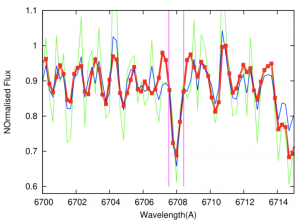T Coronae Borealis is a recurrent, symbiotic nova system currently in quiescence between its periodic ≍80 yr cycle of eruptions. Observations during inter-outburst epochs provide an opportunity to study properties of the accretion disk and the M red giant. Here we present new irradiated (blackbody veiling) models, incorporating modern molecular opacities and line lists, of spectra derived from high-resolution (22,000 ≲ R ≲ 120,000) optical echelle observations obtained at two epochs, one prior to and one post the 2015 rebrightening event at similar spectroscopic system phase. We find a lithium abundance in the secondary at both epochs to be comparable. The non-irradiated (classical) model atmospheres yield a lithium abundance, A(Li) = 1.3 ± 0.1. The irradiated model (veiled) atmospheres, which are likely a better representation of the system in which the white dwarf and accretion disk illuminate the red giant, give A(Li) = 2.4 ± 0.1.

